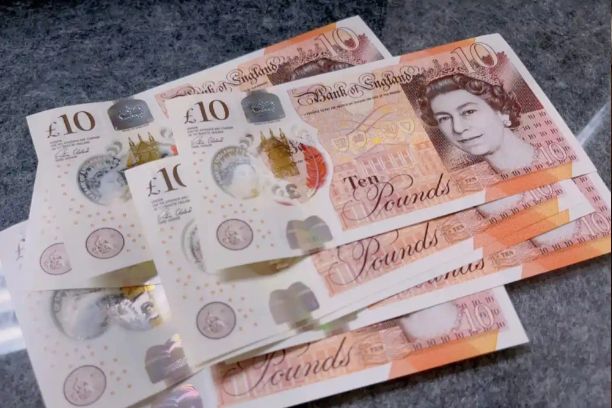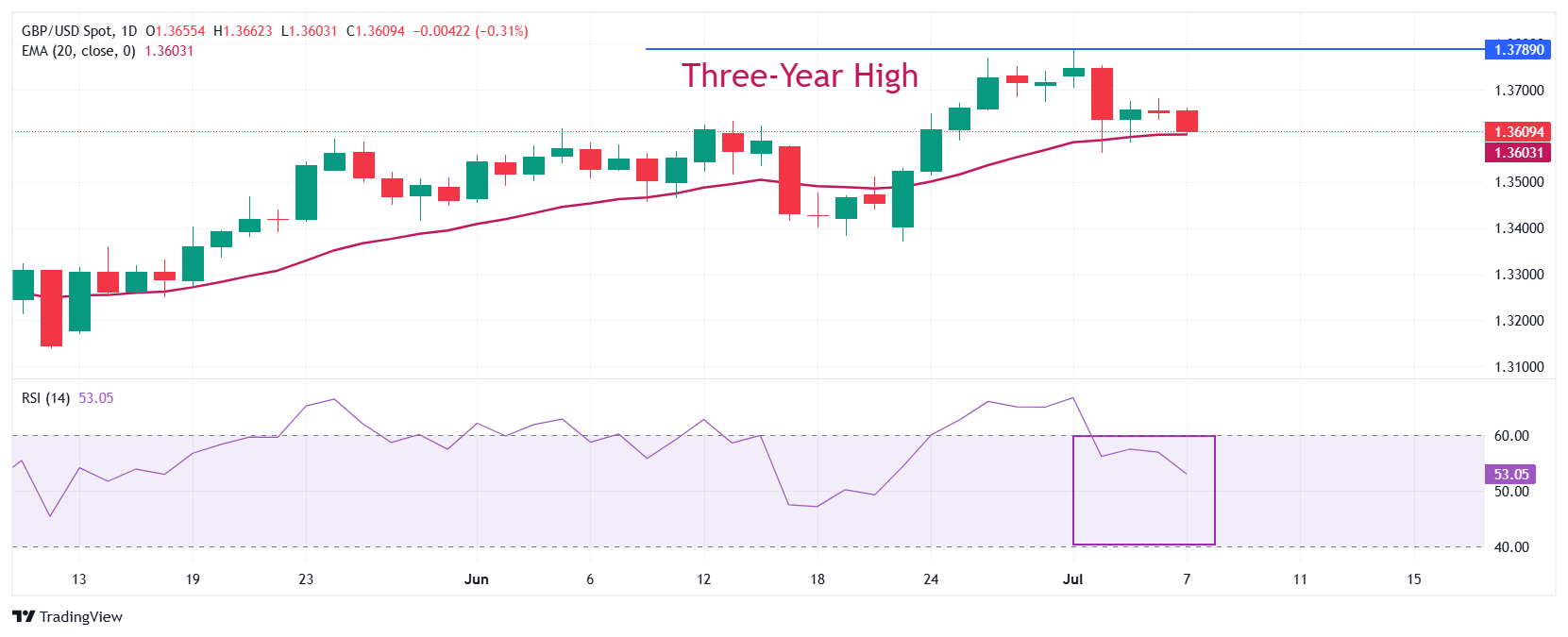Pound Sterling weakens against US Dollar as trade jitters resurface ahead of tariff deadline

The Pound Sterling slides to near 1.3600 against the US Dollar as markets focus on any trade deals ahead of the July 9 deadline for US tariffs.
Trump prepares to send letters to those nations that have failed to ink a trade pact, specifying tariff rates.
Higher UK welfare spending bill will need tax raise or spending cuts going forward.
The Pound Sterling (GBP) drops to near 1.3600 against the US Dollar (USD) during European trading hours on Monday. The GBP/USD pair declines as the US Dollar trades calmly, with investors awaiting trade-related headlines in the countdown to the United States (US) tariff deadline on July 9.
The US Dollar Index (DXY), which tracks the Greenback’s value against six major currencies, trades 0.15% higher at near 97.15.
US Treasury Secretary Scott Bessent expressed confidence in an interview with CNN over the weekend that Washington will announce several deals in a couple of days. “There’s a lot of foot dragging on the other side, and so I would expect to see several big announcements over the next couple of days,” Mr. Bessent said. “We’re going to be very busy over the next 72 hours,” he added.
So far, Washington has announced bilateral agreements with the United Kingdom (UK) and Vietnam and a limited trade pact with China. On July 2, the US expressed confidence that it would close a deal with India in 48 hours, but such an agreement has not been confirmed yet.
Meanwhile, investors should brace for volatility as the US is prepared to send letters to those nations that have not signed a deal with Washington during the 90-day tariff extension.
Over the weekend, Trump said the first batch of letters outlining the tariff levels they would face on exports to the United States would be sent to 12 countries on Monday, Reuters reported.
Daily digest market movers: Pound Sterling weakens amid mounting fiscal risks
The Pound Sterling trades lower against its major peers, except antipodeans, at the start of the week. The British currency remains under pressure due to the fresh escalation in United Kingdom (UK) fiscal risks. The increase in the welfare spending bill by the administration has raised the likelihood of an announcement of a tax increase in the Autumn Budget.
Last week, UK Chancellor of the Exchequer Rachel Reeves broke her self-imposed fiscal rules and increased the standard allowance to the Universal Credit, a move that is expected to accelerate the financial burden by £4.8 billion by fiscal year 2029-2030.
According to a report from Barclays, the UK administration will likely necessitate tax increases in the Autumn Budget in the face of mounting fiscal challenges.
On Thursday, Chancellor Reeves said in an interview with BBC that the administration will have to bear the cost of the increase in welfare spending. However, she didn’t clarify whether the government will raise taxes or cut spending. “Of course, there is a cost to the welfare changes that Parliament voted through this week and that will be reflected in the Budget," Reeves said.
On the economic front, monthly Gross Domestic Product (GDP) and factory data for May, to be published on Friday, will be key triggers for the Pound Sterling.
Before that, Bank of England (BoE) Deputy Governor for Financial Stability Sarah Breeden is scheduled to speak at the Annual Chapman-Barrigan lecture series on Thursday. However, she is unlikely to speak on the monetary policy outlook and inflation.
The next monetary policy announcement by the BoE is on August 7, with markets expecting another 25 basis points interest-rate cut to 4%, according to analysts at Deutsche Bank. The bank also expects the BoE to deliver two more interest rate cuts in November and December.
Technical Analysis: Pound Sterling falls to near 20-day EMA

The Pound Sterling slips to near the round level of 1.3600 against the US Dollar on Monday, which coincides with the 20-day Exponential Moving Average (EMA).
The 14-day Relative Strength Index (RSI) falls to near 50.00, suggesting that the bullish momentum has faded.
Looking down, the psychological level of 1.3500 will act as a key support zone. On the upside, the three-and-a-half-year high around 1.3800 will act as a key barrier.
* The content presented above, whether from a third party or not, is considered as general advice only. This article should not be construed as containing investment advice, investment recommendations, an offer of or solicitation for any transactions in financial instruments.


